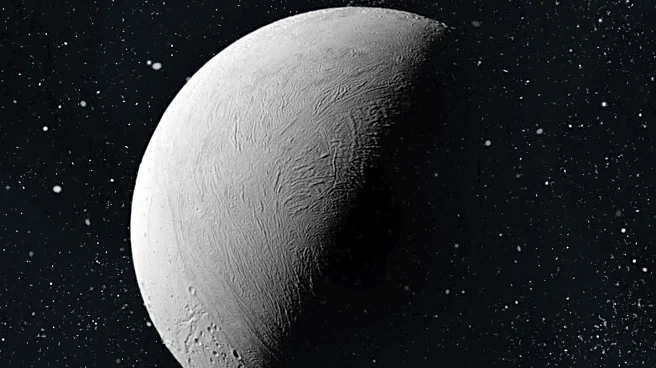What's Happening?
On the morning of October 18, a celestial event will occur as Venus and the crescent Moon align closely in the constellation Virgo. This event will be visible before sunrise, with Venus appearing as a bright
magnitude -3.9 object, exhibiting a 94% illuminated gibbous phase. The Moon, in contrast, will be a delicate 4% illuminated waning crescent, positioned 4 degrees west of Venus. Additionally, the double star Porrima, or Gamma Virginis, will be visible below the Moon and Venus, characterized by components separated by approximately 4 arcseconds. This alignment offers a unique opportunity for sky watchers to observe these celestial bodies in close proximity.
Why It's Important?
This celestial alignment is significant for both amateur and professional astronomers as it provides a rare opportunity to observe the interaction between the Moon and Venus, two of the brightest objects in the night sky. Such events can enhance public interest in astronomy and encourage educational activities related to space observation. The visibility of the double star Porrima adds an extra layer of interest, as it is a well-known binary star system that can be easily split with a telescope. This event highlights the dynamic nature of our solar system and the ongoing dance of celestial bodies, offering insights into their movements and interactions.
What's Next?
Following this event, observers can look forward to other celestial phenomena, such as the crossing of Io, Europa, and their shadows across Jupiter. These events continue to provide opportunities for observation and study, contributing to our understanding of the solar system. As the Moon continues its orbit, it will pass 4 degrees due south of Venus at 6 P.M. EDT, offering another chance to observe their relative positions. Such events are part of a larger calendar of astronomical occurrences that enthusiasts can track and plan for.
Beyond the Headlines
The alignment of Venus and the Moon in Virgo not only offers a visual spectacle but also serves as a reminder of the intricate gravitational interactions that govern celestial mechanics. These events can inspire discussions about the history of astronomy, the development of observational techniques, and the cultural significance of celestial phenomena. They also underscore the importance of preserving dark skies for future generations to enjoy and study the wonders of the universe.














